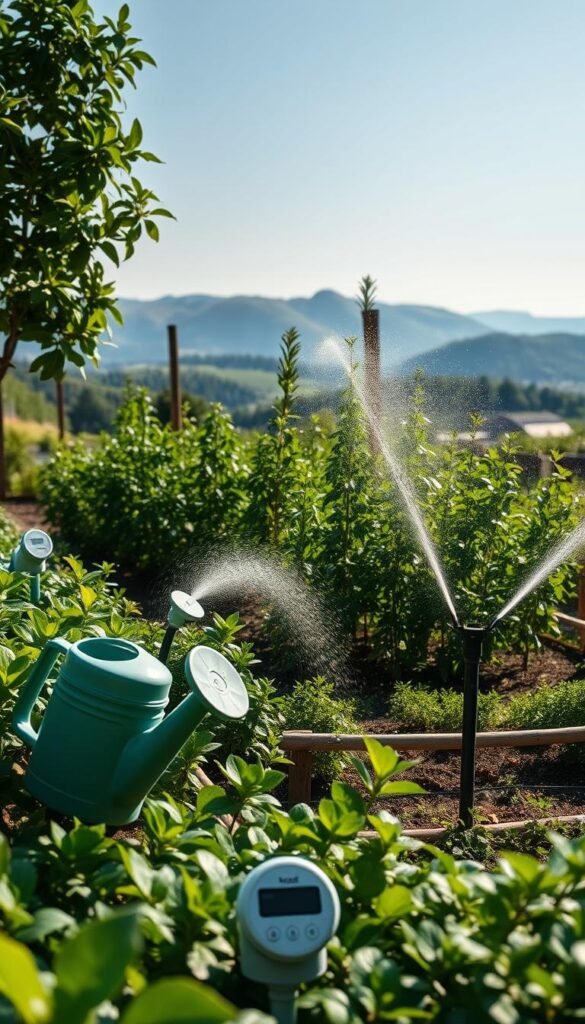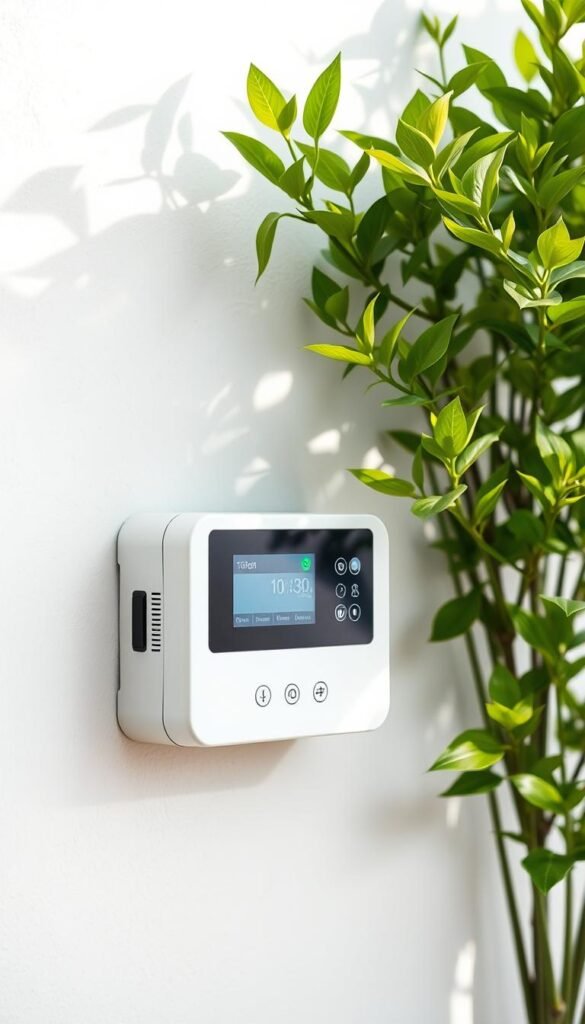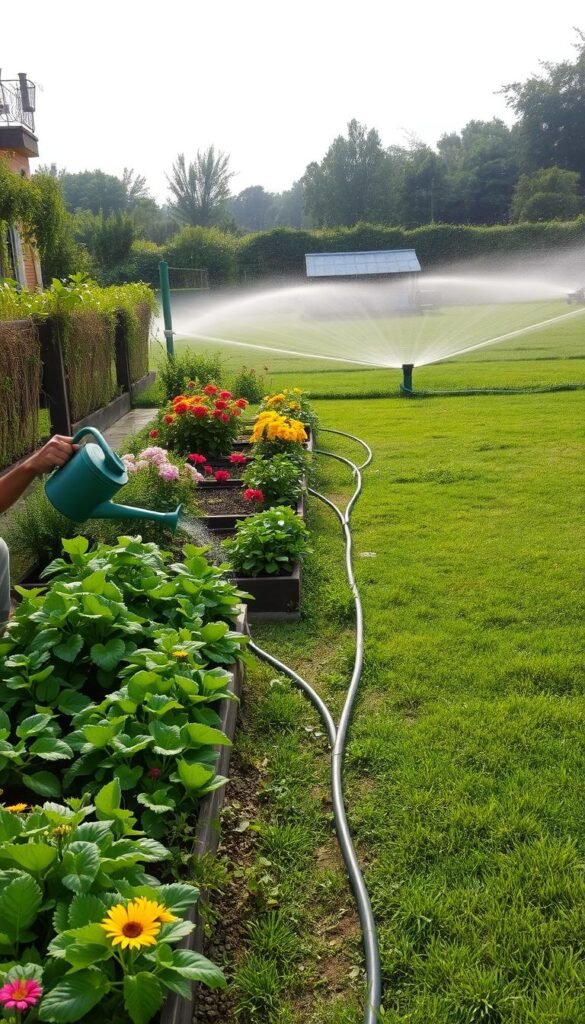Did you know the average home irrigation system wastes enough water monthly to fill a swimming pool? According to the EPA, households with automated timers use 50% more water outdoors than those without. That’s like pouring half your effort—and money—down the drain.
Your garden doesn’t need to be thirsty or drowned to thrive. Most plants, including lawns, require just one inch of water weekly, rain included. Yet tiny leaks—no bigger than a pen tip—can waste over 6,000 gallons a month. Imagine what that does to your utility bill!
This guide helps you spot the difference between what your plants actually need and what you think they need. You’ll learn how to adjust routines seasonally, fix sneaky leaks, and create a lush landscape that’s both beautiful and efficient. Healthy roots start with smart habits—and we’ll show you how to build them.
Ready to save water, time, and stress? Let’s grow a garden that flourishes without waste.
Understanding Your Garden’s Water Needs
Your garden’s thirst depends on two key factors: what’s beneath your feet and what’s happening above your head. Let’s dig into how soil and weather shape your watering strategy.
Soil Secrets: Texture Matters
Sandy soils act like sieves, draining water fast. These need 2-3 quick sessions weekly. Clay soils? They’re natural sponges. Water them once weekly, but deeply. Use the finger test: push into the top 6 inches. Dry dirt means go-time for hydration.
Rain Check: Work With the Sky
Your plants need teamwork between you and the clouds. A $5 rain gauge reveals exactly how much nature contributes. Track weekly totals, then supplement what’s missing. Windy spots dry out faster, while shaded areas stay damp longer—map these microclimates in your yard.
Local experts are your allies. Contact your Cooperative Extension Service for free soil tests and watering guides tailored to your zip code. They’ll help you balance plant needs with regional weather patterns.
Remember: Succulents crave dry spells between drinks, while ferns wilt without constant moisture. Match your routine to each plant’s preferences, and you’ll see healthier growth with less effort.
Strategies for Watering Wisely: Tips to Avoid Over- or Under-Watering

Timing and precision separate thriving gardens from struggling ones. Let’s explore how to match your routine to nature’s clock and your plants’ unique needs.
Mastering Morning Moisture
Set your alarm for 4-8 a.m. This golden window reduces evaporation by 30% compared to midday. Cooler temperatures let water soak deep into roots instead of baking off pavement. Pro tip: Use recycled tuna cans as measurement tools. Place them around your lawn to track how long your sprinkler takes to collect ½ inch of water—usually 15-30 minutes.
| Sprinkler Type | Time to Fill Can | Frequency |
|---|---|---|
| Rotating | 25 minutes | Twice weekly |
| Oscillating | 18 minutes | Every 3 days |
| Drip System | 45 minutes | Once weekly |
Plant Personality Profiles
Not all greenery drinks the same. Established trees and shrubs thrive on weekly deep soakings—their roots reach further than your lawn’s. Annual flowers? They’re the thirsty neighbors needing check-ins every 2-3 days.
Watch for subtle signs:
• Morning droop that disappears by noon = normal
• Crispy leaf edges = dehydration alert
• Yellowing lower leaves = too much H2O
Group plants by their hydration needs. Create separate zones for drought-tolerant succulents and moisture-loving hostas. Your water bill—and plants—will thank you.
Smart Irrigation Systems and Water-Saving Technologies

Modern irrigation systems do more than deliver water—they’re precision tools for thriving landscapes. With the right maintenance and tech upgrades, you’ll eliminate waste while keeping plants perfectly hydrated.
Inspecting and Maintaining Your Irrigation System
The EPA’s four-step WaterSense plan turns upkeep into savings: inspect, connect, direct, select. Monthly checks prevent surprises—look for cracked sprinkler heads or loose hose connections. A single leaky joint can waste 250 gallons weekly!
| Maintenance Task | Frequency | Water Saved Monthly |
|---|---|---|
| Head Alignment Check | Biweekly | 1,200 gallons |
| Pipe Connection Inspection | Monthly | 2,800 gallons |
| Nozzle Cleaning | Seasonally | 900 gallons |
Redirect misaimed sprayers hitting pavement. “Sidewalks don’t grow—your landscape does,” reminds EPA water specialist Mara Kaplan. Use adjustable heads to create dry zones around patios and driveways.
Embracing Smart Controllers and Sensors
Weather-based irrigation controllers analyze local forecasts through Wi-Fi. Pair them with soil moisture probes that override schedules when rain arrives. Smart systems adapt to:
- Temperature swings
- Unexpected rainfall
- Soil type variations
Micro-irrigation options like drip lines target roots directly, cutting evaporation by 70% compared to sprinklers. Bubbler systems work wonders for trees, while micro-sprays hydrate flower beds without runoff.
“Homes using WaterSense controllers save 15,000 gallons yearly—enough to fill 20 hot tubs!”
Practical Techniques for Efficient Water Use

Transforming your garden into a water-smart space requires simple yet powerful methods. These approaches help plants thrive while keeping your hose time minimal.
Root Revolution Through Deep Hydration
Give plants a survival toolkit by watering deeply. Soak soil until moisture reaches 12 inches down. This trains roots to grow downward, creating drought-resistant champions. For trees and shrubs, aim for 30-minute soak sessions weekly instead of daily sprinkles.
| Plant Type | Water Depth | Frequency |
|---|---|---|
| Mature Trees | 18-24 inches | Every 10 days |
| Vegetables | 6-8 inches | Twice weekly |
| Lawns | 4-6 inches | Weekly |
Nature’s Helpers: Mulch and Smart Systems
Wrap your soil in a 3-inch blanket of wood chips or straw. This natural shield keeps earth cool and cuts evaporation by 25%. Pair this with DIY drip systems that deliver water straight to roots.
Rain barrels capture free stormwater—one inch of rain yields 600 gallons from a 1,000 sq.ft roof. Use this treasure for thirsty shrubs and gardens during dry spells. Newly planted trees need weekly drinks for their first summer. After that, check soil moisture at 9-inch depth before hydrating.
Boost lawn resilience by mowing high. Taller grass (2.5+ inches) grows deeper roots that tap into soil moisture reserves. Combine these strategies, and you’ll see plants flourish with less effort.
Wrapping Up Your Watering Strategy
Balancing your landscape’s needs with conservation starts with simple, intentional choices. Drought-tolerant stars like black-eyed Susans and bur oak trees thrive on minimal hydration while adding vibrant texture. Pair these with DIY self-watering systems—studies show they use 30% less water than standard methods.
Begin by tracking rainfall and adjusting routines weekly. Check soil moisture at root level before adding water, and prioritize fixes like redirecting misplaced sprinklers. Over time, you’ll naturally refine your approach based on plant health and seasonal shifts.
Most established greenery needs just one inch of water weekly, rain included. Smart tools like moisture sensors help maintain this baseline while reducing waste. By combining strategic plant choices with efficient systems, you’ll create a resilient garden that saves resources without sacrificing beauty.






